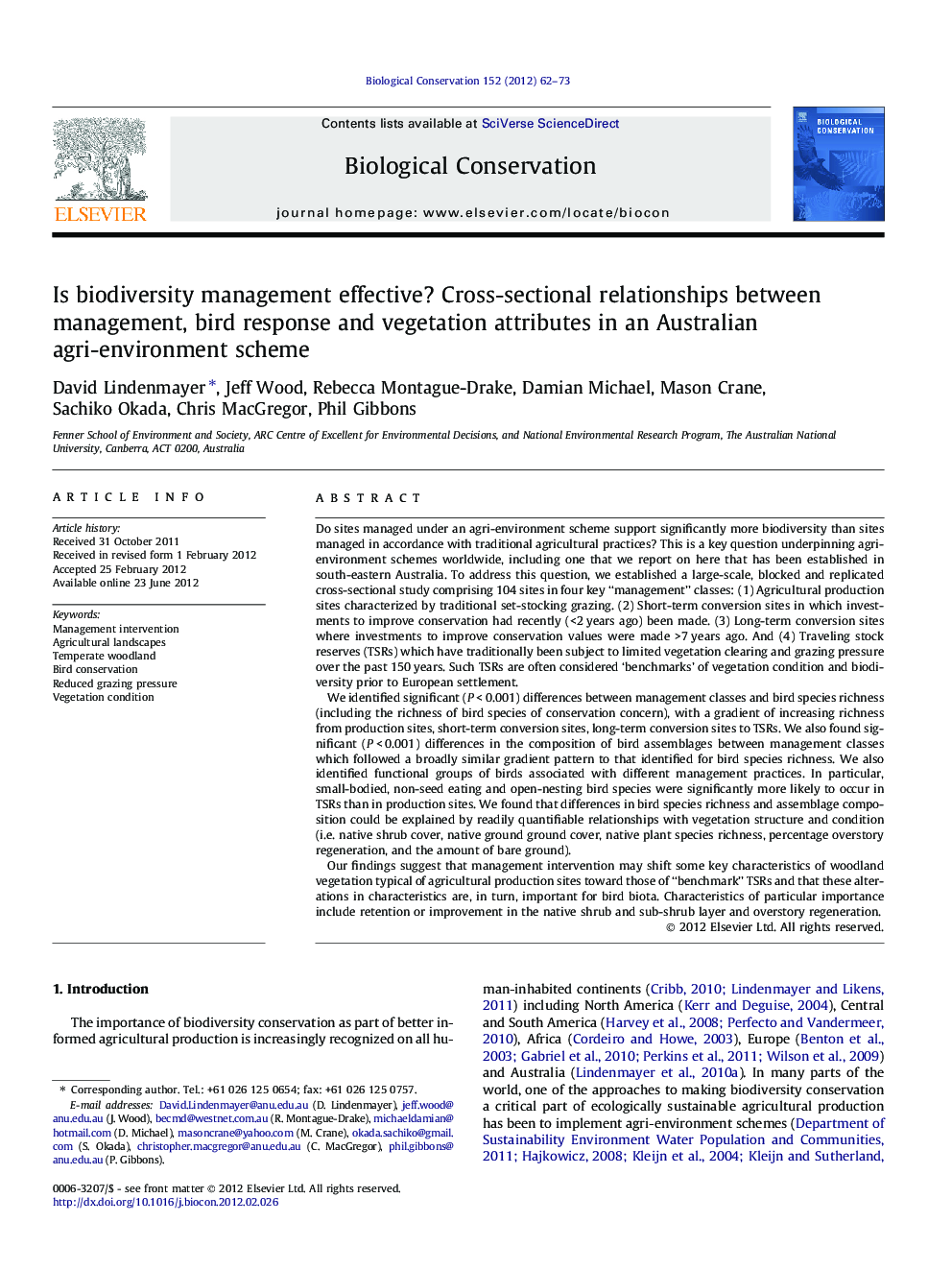| کد مقاله | کد نشریه | سال انتشار | مقاله انگلیسی | نسخه تمام متن |
|---|---|---|---|---|
| 4385247 | 1617949 | 2012 | 12 صفحه PDF | دانلود رایگان |

Do sites managed under an agri-environment scheme support significantly more biodiversity than sites managed in accordance with traditional agricultural practices? This is a key question underpinning agri-environment schemes worldwide, including one that we report on here that has been established in south-eastern Australia. To address this question, we established a large-scale, blocked and replicated cross-sectional study comprising 104 sites in four key “management” classes: (1) Agricultural production sites characterized by traditional set-stocking grazing. (2) Short-term conversion sites in which investments to improve conservation had recently (<2 years ago) been made. (3) Long-term conversion sites where investments to improve conservation values were made >7 years ago. And (4) Traveling stock reserves (TSRs) which have traditionally been subject to limited vegetation clearing and grazing pressure over the past 150 years. Such TSRs are often considered ‘benchmarks’ of vegetation condition and biodiversity prior to European settlement.We identified significant (P < 0.001) differences between management classes and bird species richness (including the richness of bird species of conservation concern), with a gradient of increasing richness from production sites, short-term conversion sites, long-term conversion sites to TSRs. We also found significant (P < 0.001) differences in the composition of bird assemblages between management classes which followed a broadly similar gradient pattern to that identified for bird species richness. We also identified functional groups of birds associated with different management practices. In particular, small-bodied, non-seed eating and open-nesting bird species were significantly more likely to occur in TSRs than in production sites. We found that differences in bird species richness and assemblage composition could be explained by readily quantifiable relationships with vegetation structure and condition (i.e. native shrub cover, native ground ground cover, native plant species richness, percentage overstory regeneration, and the amount of bare ground).Our findings suggest that management intervention may shift some key characteristics of woodland vegetation typical of agricultural production sites toward those of “benchmark” TSRs and that these alterations in characteristics are, in turn, important for bird biota. Characteristics of particular importance include retention or improvement in the native shrub and sub-shrub layer and overstory regeneration.
► We quantified bird responses to an Australian agri-environment scheme.
► Birds responded significantly to management intervention.
► Management intervention altered vegetation in ways that assisted bird biota.
► Functional groups of birds were associated with different management classes.
► Small-bodied, non-seed eating species occurred less often in production sites.
Journal: Biological Conservation - Volume 152, August 2012, Pages 62–73